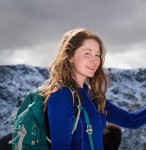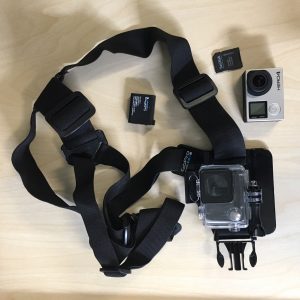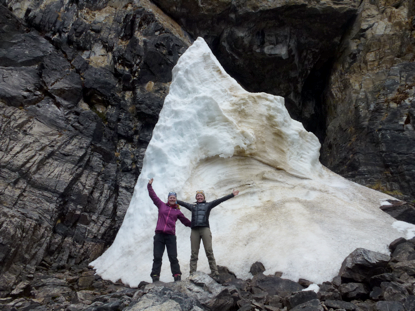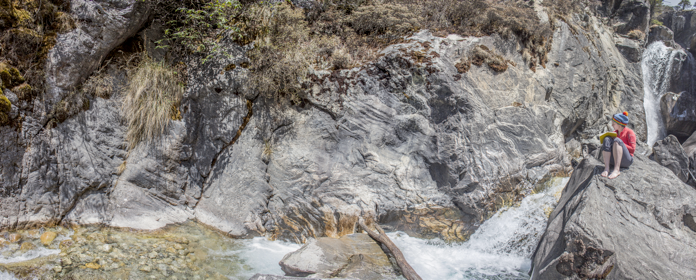
Eleni Wood, The Open University
In mid-spring this year, I packed my bags for my second field season in north-west Bhutan. Bhutan is a jewel of the Himalaya; the small mountain kingdom is home to fantastic people, herds of yak and even the illusive snow leopard.
The trip’s goal was to study and collect rocks for my PhD research, which would help me investigate the growth and deformation of the mountain range.
It was a trip I definitely didn’t want to forget. It was also the last chance, during my PhD at least, that I would get to capture the magic of the environment on film. So, I squeezed the GoPro Hero 4, chest strap, waterproof casing and a number of batteries into my packing.

The Go Pro Kit, showing the camera, batteries and shoulder strap.
I was a first time GoPro user, but I could definitely see the benefits of taking one over other film equipment, primarily: its size and durability.
To illustrate the point, lugging it around at 4000 m altitude still left me lots of room in my rucksack for rocks and it could survive pretty much anything the remote environment could throw at it.
All packed up and several flights later, Stacy Phillips (fellow PhD student and my field assistant) and I touched down in Bhutan.

Eleni Wood and Stacy Phillips on location in Bhutan.
Optimistic about the data and footage we would collect, we set out with our guide, Kinley Dorji, driving and then hiking up the trails towards the remote settlement of Laya.
Over the next few weeks we were spoilt rotten with some fantastic rocks and views, and I did my best to use the GoPro to capture the experience.
To view the results of my efforts, select the video below.
Back in the UK, I loaded the unedited footage onto my laptop. Viewing the clips allowed me to reflect on how I had used the GoPro and how useful it was.
In this post, I thought I’d share what worked well and what I would do differently in the future.
Pros of the GoPro:
- It’s lightweight; I barely noticed having it in my backpack.
- I really like that it is rugged. It takes away the stress of worrying about damaging it in wet weather or dropping it on a rock.
- You can easily capture footage on the go. Especially if you’re wearing the chest strap, you suddenly have your hands free to carry on with your tasks.
- Wide angle lens is good for capturing action.
- You can quickly create a record of where you have been to jog your memory when you are back from fieldwork.
Things that I didn’t anticipate:
- The chest strap is useful for keeping your hands free, but in hindsight, I would have liked a bit more flexibility for filming and taken a different mount e.g. a pole. The chest strap footage was a little bit too jerky for my liking and was harder to point towards what I wanted to film.
- All of my batteries ran out! Knowing there would be no access to power at camp, I took a solar panel to combat this. But, during a day of work the batteries would drain themselves. This is mainly because the power button is easily pressed down, and the GoPro would turn on when in a rucksack. Next time I’d take a better case for when I’m not using it.
All in all, I would say that taking the GoPro to the Himalaya was a good idea, and I did get some really nice footage. However, I wish that I had spent more time thinking about how I could make the best of it.

Eleni Wood, The Open University.
The main barrier to this was because I was already using a digital point and shoot camera, to take pictures of my samples and record my fieldwork. I was also recording video diaries on my Panasonic HX-WA2 video camera. A third camera on top of this and my fieldwork was one too many.
That said, I would definitely love to try again, especially because I think used in the right way you can get some brilliant footage. Perhaps even on the back of a drone!

Fieldwork Diaries: @FieldworkDiary.
Fieldwork Diaries
When we’re not filming and collecting data on location in Bhutan, or analysing samples in the lab, Stacy and I produce a podcast to explore researchers’ experiences of fieldwork.
If you’d like to know more about the Fieldwork Diaries podcast, select: http://www.fieldworkdiaries.com.
Acknowledgements
The Go Pro kit was provided on loan from the Open University’s Graduate School.
Eleni and Stacy’s PhD research is funded through the NERC CENTA Doctoral Training Partnership, and based in the OU’s School of Environment, Earth and Ecosystem Sciences (EEES).
